Sahelanthropus tchadensis
Online Biology Dictionary
EUGENE M. MCCARTHY, PHD
|
|
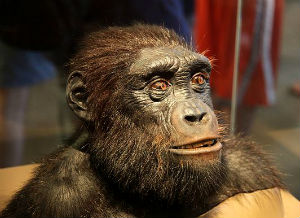
|
|
Sahelanthropus tchadensis (Enlarge) Smithsonian, Washington, D.C. Image: Tim Evanson |
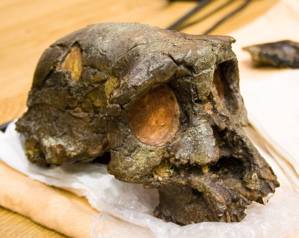
|
| S. tchadensis Image: Ludovic Péron |
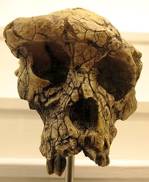
|
|
Toumaï skull: Frontal view.
(Enlarge) |
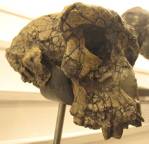
|
|
Lateral view (Enlarge) |
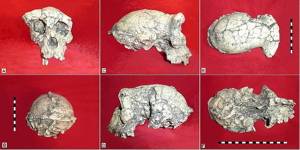
|
Six views of a cast of the unreconstructed holotype cranium TM 266-01-060-1 dubbed Toumaï (Enlarge)
Photo: Oryctes Site of discovery
Site of discovery
|
The seven-million-year-old fragments of bone on which this taxon is based were found in 2001. They were initially described as belonging to the oldest known hominid (Brunet et al. 2002), but are now deemed to represent the mortal remains of a Miocene ape. In fact, if the reconstruction pictured at right (Hall of Human Origins, Smithsonian) is at all accurate, then this so-called hominid is not easily distinguished from a chimpanzee. This leaves Orrorin tugenensis a reasonable chance of claiming the prize for earliest hominid.
Sahelanthropus tchadensis is based on a single cranium, the dramatically named Toumaï skull (Toumaï means "hope of life" in Tebou, a Chadian tongue), which was found in Chad's Djurab desert – see maps below right.
The brain size of this erstwhile hominid was only about 350 cc, similar to that of a modern chimpanzee (human mean cranial capacity is 1350 cc). Moreover, the skull has the same general appearance as that of a chimpanzee. No one knows how long chimpanzees have existed – perhaps this actually is the skull of a chimpanzee? Certainly, we can conclude that Sahelanthropus is a misnomer, since anthropus means human being, not ape.
No postcranial remains are known and it is unknown whether Sahelanthropus tchadensis was bipedal. The canine wear is similar to that of an ape (Brunet et al. 2002). So one would expect the diet of this creature to have been similar to that of modern chimpanzees. There is, of course, no evidence of the use of fire by this presumptive simian — the earliest evidence of the use of fire by a hominid is by Homo erectus, millions of years later.
The only actual hominid remains that have been found in Chad are those of Australopithecus bahrelghazali. Otherwise, the nearest sites yielding hominid fossils lie more than 2,000 kilometers away in eastern Africa.
Perhaps we are not from the apes alone?

|
Australopithecus bahrelghazali >>